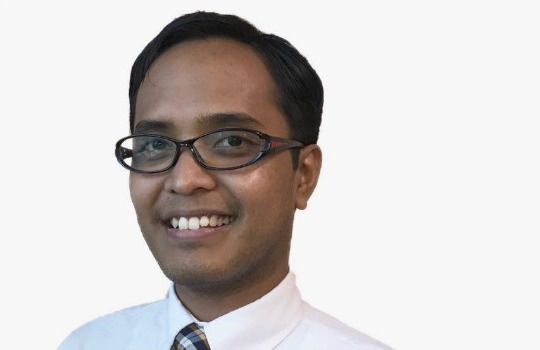
“Biometrics is used because it represents who we are as a unique human being. The need for authentication to distinguish one person from the other is served by the unique biometrics of people whether by means of facial, fingerprint, iris or retinal recognition…”
FST Media: What are your business and digital priorities for the next 6 months?
Simanullang: The two most important things in the past that will greatly influence set our priorities in the nearest future are:
- Indonesian government along with our Central Bank had planned the establishment of National Payment Gateway (NPG). This NPG will pave the way for the establishment of a central institution overseeing interconnectivity of all electronic payments through various means, including debit and credit cards as well as e-money. To speed up the development of NPG, four banks owned by the government i.e. BRI, BNI, BTN and Mandiri incorporated in the State-Owned Banks Association (HIMBARA-LINK) are setting up their electronic channels for interconnectivity;
- Bank Rakyat Indonesia (BRI) is the first bank in the world to own and operate its own satellite BRISAT, launched from Guiana Space Centre in Korou, French Guiana on June 18th 2016. This satellite will operate more than 15 years until 2030s and it will interconnect all of our remote microbanking outlet;
With these background in mind and with the reason that majority of share holder of BRI is the government, the first priority is to interconnect our electronic channels, among which more than 3,000 of our ATMs, to the HIMBARA LINK. The second priority will be to implement our BRISAT as the main or backup communication network of more than 5,000 outlet and more than 20,000 ATM. The third priority, consequentially, is to maintain the availability and security of our electronic and conventional channels.
FST Media: How are developments in biometrics shaping traditional banking?
Simanullang: Biometrics is used because it represents who we are as a unique human being. The need for authentication to distinguish one person from the other is served by the unique biometrics of people whether by means of facial, fingerprint, iris or retinal recognition.
It has been said that there are three kinds of authentication: by ‘what you know’, by ‘what you have’ and by ‘who you are’. We know our PINs. We have our cards. PIN can be stolen by key logger or infrared camera. Cards can be stolen electronically by skimming devices. The internet banking and skimming fraud has recently struck Indonesian banking and costs millions of dollars losses because most of us have not yet implemented the preventive technology.
The additional security of ‘who you are’ in biometrics is the extra factor that will enhance the authentication process to ensure our customers are the one who he or she really is and hopefully this will reduce the amount of losses of our hard-earned money. The traditional banking in Indonesia has learned in a difficult way that extra authentication factor is really necessary to secure the transaction process. Biometrics therefore has a very promising role as the additional authentication factor in securing the transaction process.
FST Media: What technology or innovation is proving to be the biggest game changer for the banking industry?
Simanullang: Mobile computing is proving to be the biggest game changer in banking industry. The processing power of CPU that was once landed people on the moon, has now in the palm of our hand. With the authentication of your card 3D secure code or your fingerprint or virtual smart card, we can authorize the buying of goods or services.
FST Media: What existing technology would you like to see play a more prominent role in finance over the next few years?
Simanullang: If predictive analytics and modelling using machine learning, artificial intelligence, data science and virtual reality is considered technology of the future technology, then the existing technology to play a more prominent role are still the social, mobile, analytics and cloud technology along with multi core processor for faster transaction and multifactor authentication for safer transaction.
FST Media: What advantages will banks maintain over fintech disrupters moving forward?
Simanullang: The advantages of banks over fintech disrupters are that banks have the trust of the old and affluent people and also banking outlets are still everywhere. Banks have the trust of society, since they have operated more than hundreds of years. BRI itself has been around in Indonesia for 121 years since the year of 1895. Banks have the stamina to endure as long as they are vigilant. Banks with existing technology can generate profit to buy the innovation and technology of the future.
FST Media: How is Bank Rakyat leveraging big data and analytics to respond to the challenges of digital disruption?
Simanullang: We are having a big amount of data of more than 50 million customer accounts and therefore having a big challenge to apply big data and analytics. Sometimes the way to respond the challenges of digital disruption is not to confront them, but to collaborate with them. Last year, we have held a hackathon ‘BRI Digital Challenge’ to harness innovative ideas and to gaij innovation in collaboration with the fintechs and startups.
FST Media: Where will banking in Indonesia be in 2018?
Simanullang: Banking in Indonesia will be more efficient in a way that the government regulates the competition, lower the interest rates and establishes the National Payment Gateway. Banking will also be much more technology-reliant as the interconnectivity between government banks will necessitate them to maintain the highest level of electronic channel availability. I foresee also that banks will collaborate more with fintechs and startups.
FST Media: How does Bank Rakyat mitigate risks and encourage customer interaction?
Simanullang: Bank Rakyat Indonesia mitigate risks first by educating its own employee in a risk-awareness culture, implementing a operational risk assessor system, placing some resident auditors within each branch, auditing all business units regularly.
Bank Rakyat Indonesia also encourage customer interaction by first listening to its employee, since the number of 150,000 employee has served to be quite a population of internal customers. The listening process is held by campaigning an internal service survey and employee engagement survey and last but least by making an internal innovation competition: the BRINovation. In collaboration with fintechs and startups, there were also an innovation competition, a hackathon named ‘BRI Digital Challenge’.
Customer interaction also encouraged through social media with our official Twitter and Facebook. Some special events also held to encourage customer interaction such as: BRI RUN, BRI INDOCOMTECH, the largest IT exhibition in Indonesia and BRI NUSATIC, the decorative fish exhibition. For every exhibition, the entrance ticket was the ownership of BRIZZI, electronic money. An android application might also accompany the special event for customers to download.
FST Media: What is the next big thing for Bank Rakyat and how will you measure its success?
Simanullang: The next big thing for Bank Rakyat Indonesia is the ‘BRI Digital’ wi-fi hotspots within all over of our banking outlets. It helps the penetration of internet to the most remote area and will increase the number of internet literate customers all around Indonesia, a nation with the population of more than a quarter billion people. The measure of success will be the increasing number of active internet banking users, the retention of third party funds and the increasing of assets in BRI’s balance sheet.
FST Media: What career line would you be in if you did not work in financial services?
Simanullang: I would love to be architect of the future in the field of artificial intelligence, machine learning, data science and virtual reality. That would be in the academic or research field. Because I believe it will prove what Sir Francis Bacon had said that ‘Knowledge is power.’





